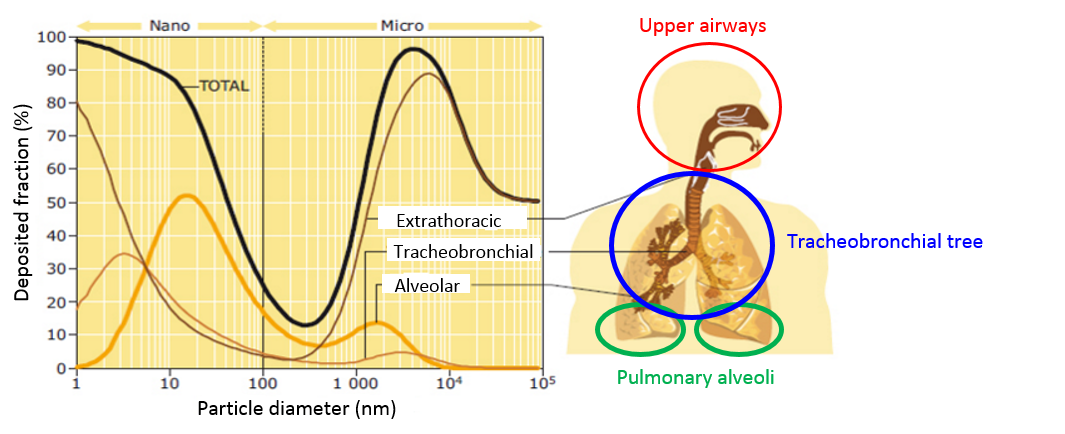
[M. Ricaud et al., INRS ED 6050 (2012)].
Particles greater than 100 microns do not enter the respiratory tract (non-inhalable particles). Particles, with a diameter of more than 10 nm up to 100 nm, deposit mostly in the pulmonary alveoli with a higher proportion than micrometric particles. Those of 10 microns reach the tracheo-bronchial tree, and smaller particles can reach deep into the lung or alveolar area.


